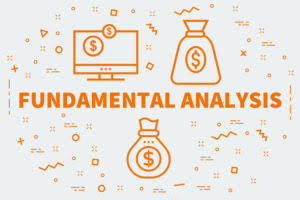
A ratio exceeding 1.0 suggests that the financial risk is elevated, as the total debt exceeds the total assets. The debt to assets ratio formula is calculated by dividing total liabilities by total assets. An ideal debt to asset ratio explains the part of the capital structure of the retained earnings company that has been financed through the loan. Therefore, it shows the interest obligations of the business in bonds and loans.

Analyze Investments Quickly With Ratios
The energy sector is capital-intensive, often requiring significant investments in infrastructure, exploration, and production, typically financed through a mix of debt and equity. In terms of your total debt, this includes both short-term debt and long-term debt. The debt ratio defines the relationship between a company’s debts and assets, and holds significant relevance in financial analysis. A lower debt ratio often suggests that a company has a strong equity base, making it less vulnerable to economic downturns Food Truck Accounting or financial stress.
- Here, “Total Debt” includes both short-term and long-term debts, while “Total Assets” includes everything from tangible assets such as machinery, to patents and other intangible assets.
- It is important to understand a good debt to asset ratio because creditors commonly use it to measure debt quantity in a company.
- Our team of reviewers are established professionals with years of experience in areas of personal finance and climate.
- The financial sector typically operates with higher debt levels due to the nature of banking operations, where liabilities include customer deposits and other borrowings.
- Therefore, we can say that 41.67% of the total assets of ABC Ltd are being funded by debt.
- Because the total debt to assets ratio includes more of a company’s liabilities, this number is almost always higher than a company’s long-term debt to assets ratio.
- For information pertaining to the registration status of 11 Financial, please contact the state securities regulators for those states in which 11 Financial maintains a registration filing.
Debt Ratio

The debt ratio aids in determining a company’s capacity to service its long-term debt commitments. As discussed earlier, a lower debt ratio signifies that the business is more financially solid and lowers the chance of insolvency. With this information, investors can leverage historical data to make more informed investment decisions on where they think the company’s financial health may go. A debt ratio greater than 1.0 (100%) tells you that a company has more debt than assets. Meanwhile, a debt ratio of less than 100% indicates that a company has more assets than debt.

Debt-to-Assets Ratio vs. Return on Assets (ROA)
- The long-term debt ratio focuses specifically on a company’s long-term debt (obligations due in more than a year) relative to its total assets or equity.
- See for yourself how it can automate financial management and insights with our no-obligation, credit card-free 14 day free trial.
- A ratio that is too low, however, could signal that your business is not leveraging debt sufficiently to, for instance, fund initiatives that could help spur growth.
- Its debt-to-equity ratio would therefore be $1.2 million divided by $800,000, or 1.5.
- By understanding and effectively managing this ratio, businesses can optimize their financial leverage, secure better financing terms, and ensure long-term stability.
This increases vulnerability to economic downturns and rising interest rates. A lower debt to asset ratio signals stronger financial flexibility and the ability to grow without excessive dependence on debt financing. If debt to assets equals 1, it means the company has the same amount of liabilities as it has assets. A company with a DTA of greater than 1 means the company has more liabilities than assets.

Comparative Ratio Analysis

This ratio provides a snapshot of a company’s short-term liquidity and its ability to meet immediate financial obligations using its most liquid assets. For example, ABC’s .30 total debt-to-total assets may also be communicated as 30%. From the example above, Sears has a much higher degree of leverage than Disney and Chipotle and therefore, a lower degree of financial flexibility. With more than $13 billion in total debt, it’s easy to understand why Sears was forced to declare Chapter 11 bankruptcy in October 2018.
- Finally, you’ll need to use debt to total assets ratio formula, which involves dividing your business’s total debt by its total assets.
- Debt-to-asset ratios above 50% are twice as likely to face financial distress compared to those with lower ratios, according to a study by the Harvard Business School.
- A company’s debt-to-asset ratio is one of the groups of debt or leverage ratios that is included in financial ratio analysis.
- Ted’s .5 DTA is helpful to see how leveraged he is, but it is somewhat worthless without something to compare it to.
- On the other hand, intangible assets are resources that only have a theorized value and no physical form such as goodwill, patents, and copyrights.
- The ratio is used to measure how leveraged the company is, as higher ratios indicate more debt is used as opposed to equity capital.
- Business managers and financial managers have to use good judgment and look beyond the numbers in order to get an accurate debt-to-asset ratio analysis.
- Common debt ratios include debt-to-equity, debt-to-assets, long-term debt-to-assets, and leverage and gearing ratios.
- Further, if the ratio of a company increases steadily, it could indicate that a default is imminent at some point in the future.
- A balanced capital structure often indicates sound financial management and strategic thinking about the cost of capital.
It is debt to asset ratio a leverage ratio that defines how much debt a company carries compared to the value of the assets it owns. This indicates that the company’s total liabilities exceed half of its total assets. Higher ratios indicate that a company is employing more leverage and has a compromised equity position. The debt to asset ratio is a valuable metric for assessing a company’s financial leverage and stability.

